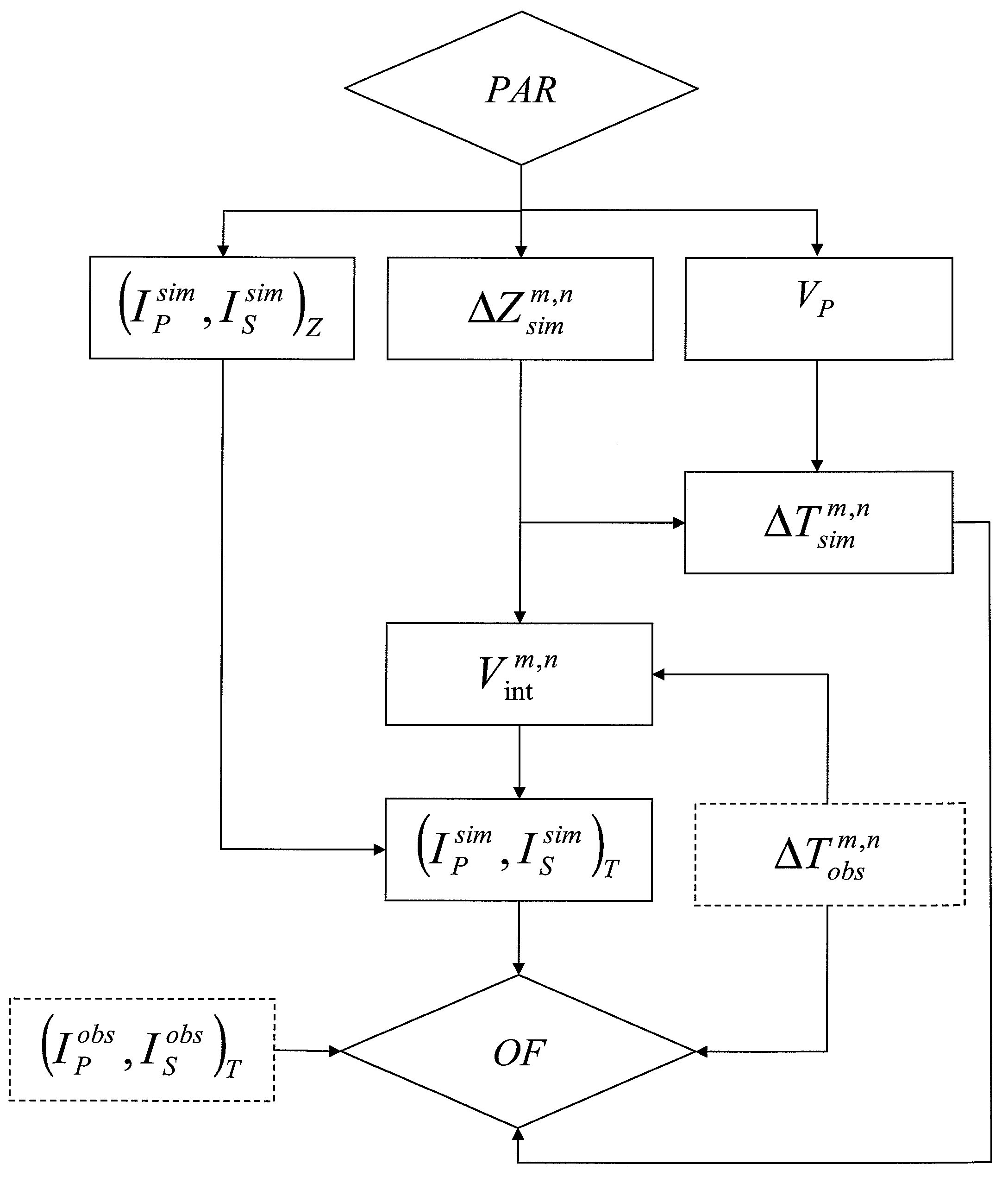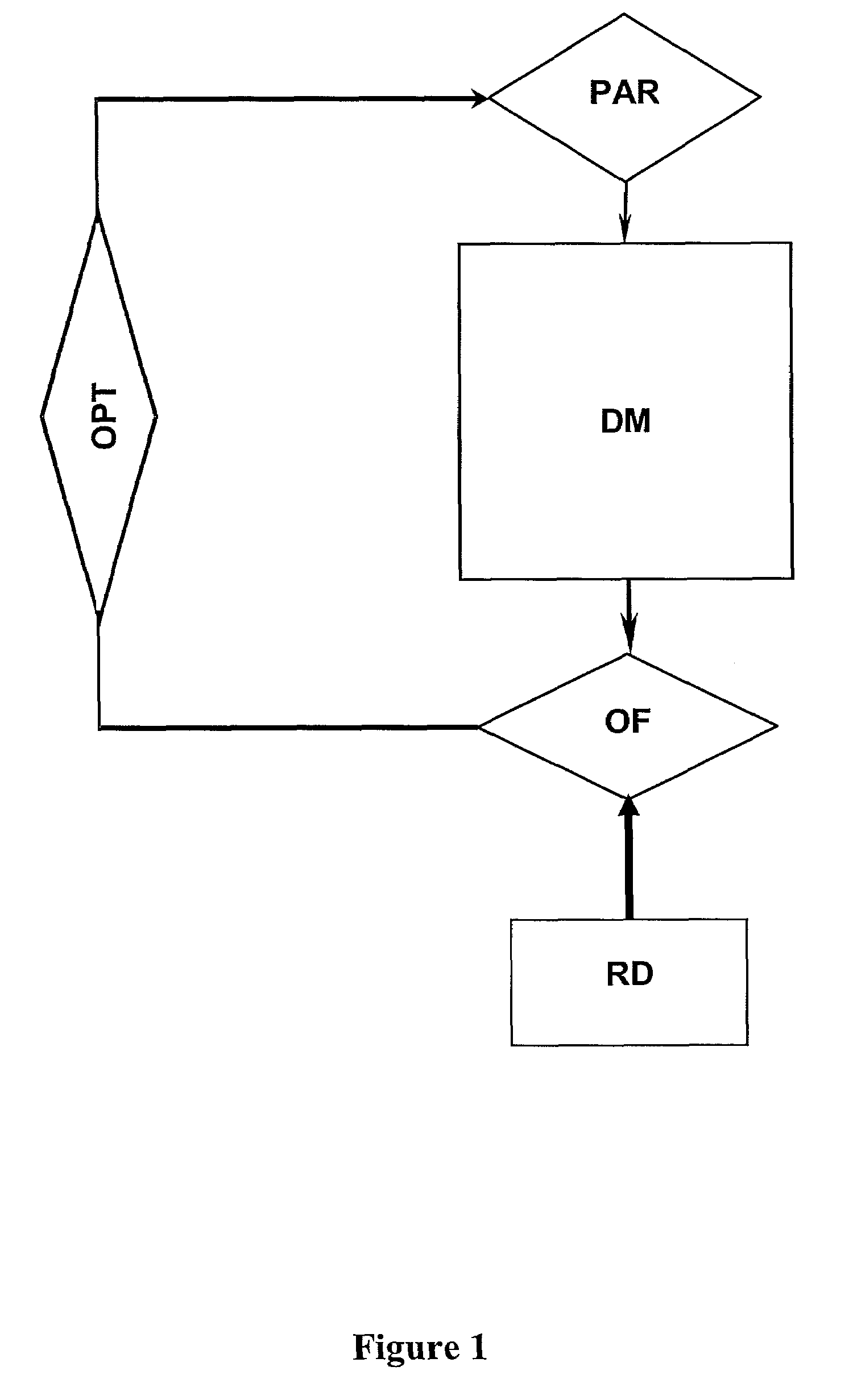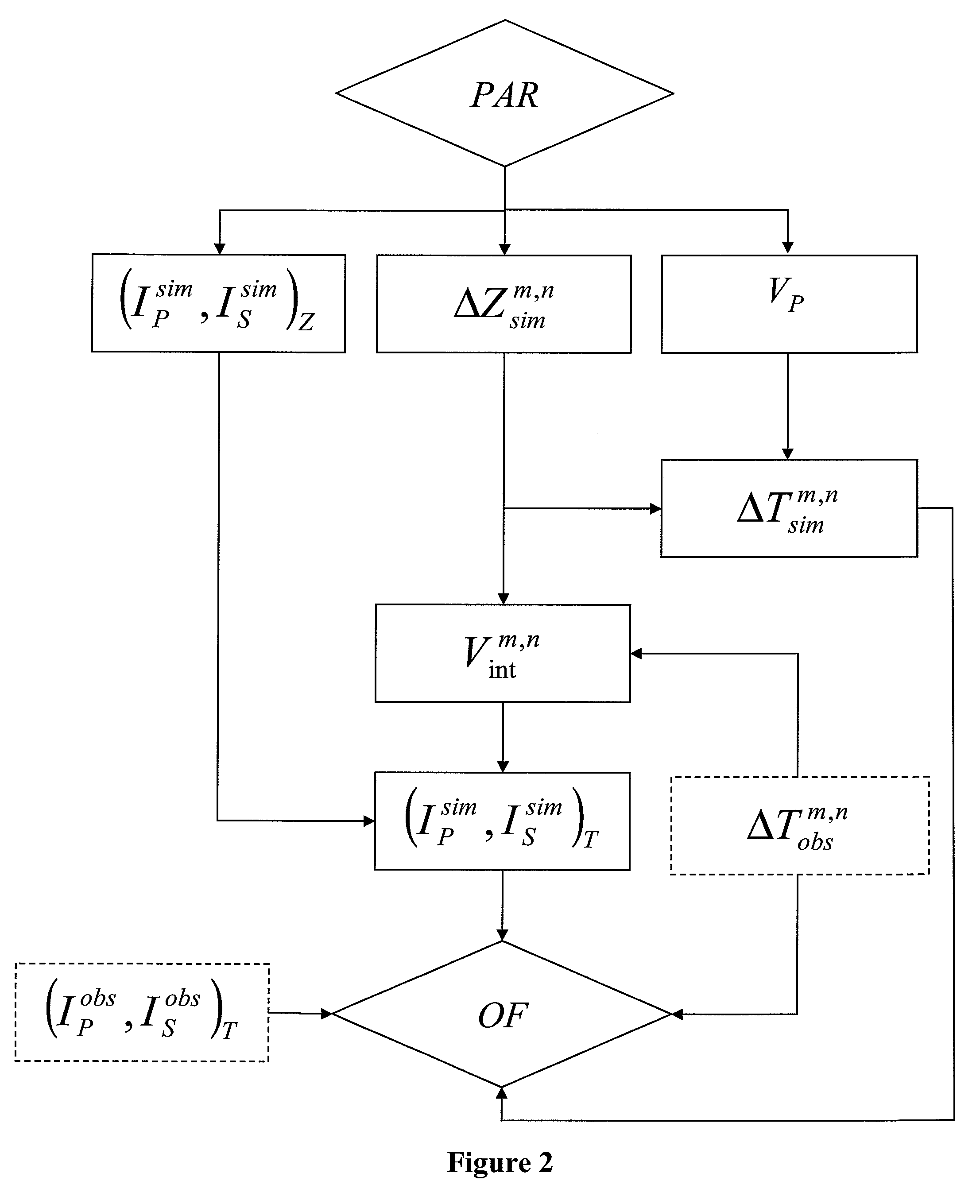Method for updating a geologic model by seismic data
a geologic model and seismic data technology, applied in the field of predicting petrophysical characteristics of underground reservoirs, can solve the problems of not ensuring that the geologic model obtained reproduces the seismic impedance obtained from the observed, and none of the above-mentioned techniques allows to provide consistency between the geologic model thus obtained and the seismic impedances,
- Summary
- Abstract
- Description
- Claims
- Application Information
AI Technical Summary
Benefits of technology
Problems solved by technology
Method used
Image
Examples
Embodiment Construction
[0040]The present invention comprises a method for constructing and updating a geologic model representative of the structure and of the behavior of an underground reservoir, constrained by geologic data acquired in depth and seismic data acquired in time. According to a particular embodiment example, the seismic data can be seismic impedances. Thus, the method comprises developing an inversion loop allowing optimizing a geologic model described on a fine grid vertically in depth, so as to reproduce satisfactorily the seismic impedances described vertically in travel time and resulting from an inversion for example. The method is thus based on the inverse problem theory.
[0041]The method uses seismic data in time, that is as a function of the travel times of the seismic waves, and not of depth. The main challenge here is integration of a depth / time conversion process with updating of the geologic model during the optimization process.
[0042]FIG. 1 illustrates the global geologic model...
PUM
 Login to View More
Login to View More Abstract
Description
Claims
Application Information
 Login to View More
Login to View More - R&D
- Intellectual Property
- Life Sciences
- Materials
- Tech Scout
- Unparalleled Data Quality
- Higher Quality Content
- 60% Fewer Hallucinations
Browse by: Latest US Patents, China's latest patents, Technical Efficacy Thesaurus, Application Domain, Technology Topic, Popular Technical Reports.
© 2025 PatSnap. All rights reserved.Legal|Privacy policy|Modern Slavery Act Transparency Statement|Sitemap|About US| Contact US: help@patsnap.com



